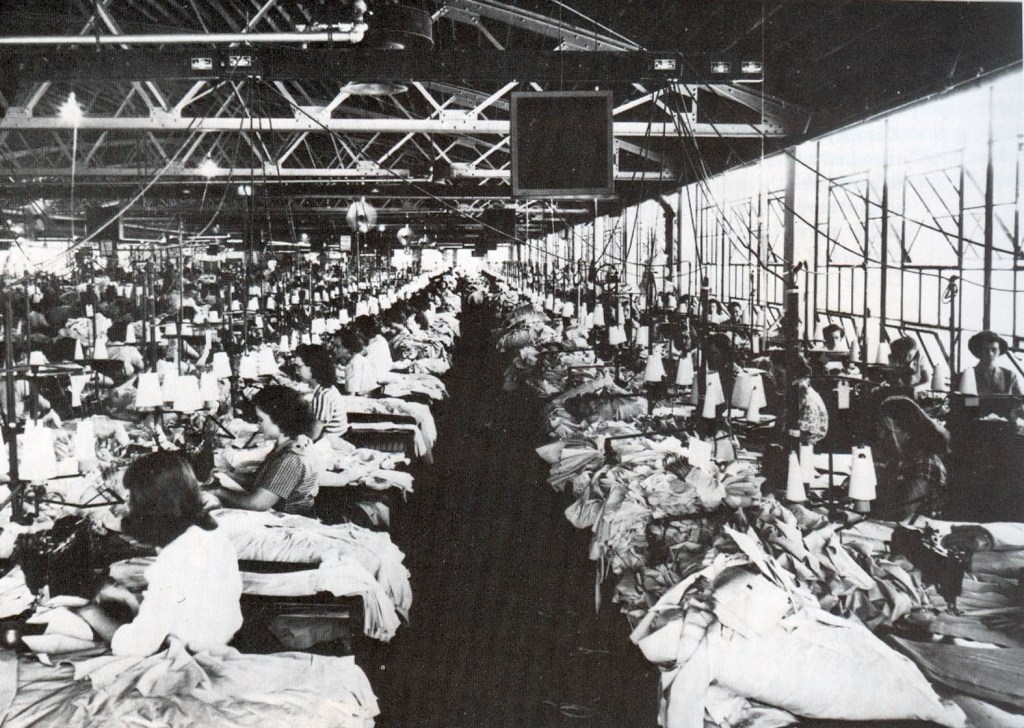Fruit of the Loom remains major company
Published 1:22 pm Friday, September 14, 2012

- Union Underwear opened a plant on Church Street in 1940. Electrical knives cut cloth 504 layers thick and 27 feet long. One thousand employees used 640 sewing machines to stitch several thousand sets of underwear wach week for America's servicemen. (Photo from Bowling Green A Pictorial History)
Early on, Bowling Green and Warren County residents charted a course for economic development of the community, with their interest in improving infrastructure.
And once a chamber of commerce was incorporated in 1935, it started representing the business community.
What is now called Fruit of the Loom was likely the first industry that located here after being formally recruited.
A local delegation from the chamber, including Sam Pushin, C.W. Lampkin and J.P. Masters, in 1940 visited owner Jack Goldfarb and convinced him to come to Bowling Green, according to John Holland, CEO for the company until 2010.
Bill Rabold, a relative of Masters, said he believes the initial connection with Goldfarb came through Pushin, who was the founder of Pushin’s Department Store.
“Whether there was any more of a relationship there, I don’t know,” Rabold said.
Masters ran multiple theaters in town for Crescent Amusement Co. of Nashville, Rabold said.
Lampkin leased and operated a string of hotels in Tennessee and Kentucky, including the Helm Hotel in Bowling Green. His obituary in the Daily News said he was a multimillionaire who had served as the city’s mayor from 1953 until his death in 1959.
Holland said a female chamber representative by the name of “Emma Cahil” (the spelling of her name is unknown) also went on the trip.
The local delegation’s efforts paid off and the company opened a manufacturing plant Jan. 20, 1941, on Church Street. Goldfarb started his company in Indianapolis in 1926 and later had operations in Frankfort and Illinois. When the company’s leases were about to run out for the Illinois facilities, Bowling Green began its recruitment efforts.
At the time, the company was known as both Derby and Union Underwear. The Union name came, Holland believes, from the union suits that the company made in Frankfort. For the younger set, union suits are sort of like long onesies for adults.
“They reached an agreement that the company would come if (Bowling Green) would form an industrial foundation to help construct the building,” Holland said. “So the community was active in industrial development even then.”
An article in the Jan. 14, 1955, edition of the Daily News on the company’s anniversary said the plant cost $65,000 to construct. Of course, it had several expansions over the years and now the former manufacturing facility is occupied by Houchens Industries.
In 1942, the company inked government contracts to produce underwear for soldiers in World War II.
“By the end of December 1942, they had 800 employees,” Holland said.
By late 1944, the company had provided 50 million boxer shorts to the troops. The work comprised three-fourths of the production that the company made here.
Holland started working for the company in 1961 as a traffic manager.
As the new guy, one of Holland’s duties was to go to the post office each morning and get the mail and sort through it. One early morning he was stooped over a desk and sorting through the mail when he heard the door open.
“I really didn’t see who it was until he sat down beside me,” Holland said.
Goldfarb had pulled up a chair next to the young Holland and quizzed him about his job.
“I opened an envelope that had an advertisement in it, and there was a paper clip on it,” he said. “I tossed the paper clip in the garbage can and he reached in and picked it up and put it on the desk.”
Holland said Goldfarb was known for picking up tags with pins on them that had been discarded on the sewing room floor and making sure that the pins were saved. He stood as an example of frugality for employees.
Goldfarb licensed the Fruit of the Loom
By late 1944, the company had provided 50 million boxer shorts to the troops. The work comprised three-fourths of the production that the company made (in Bowling Green).






